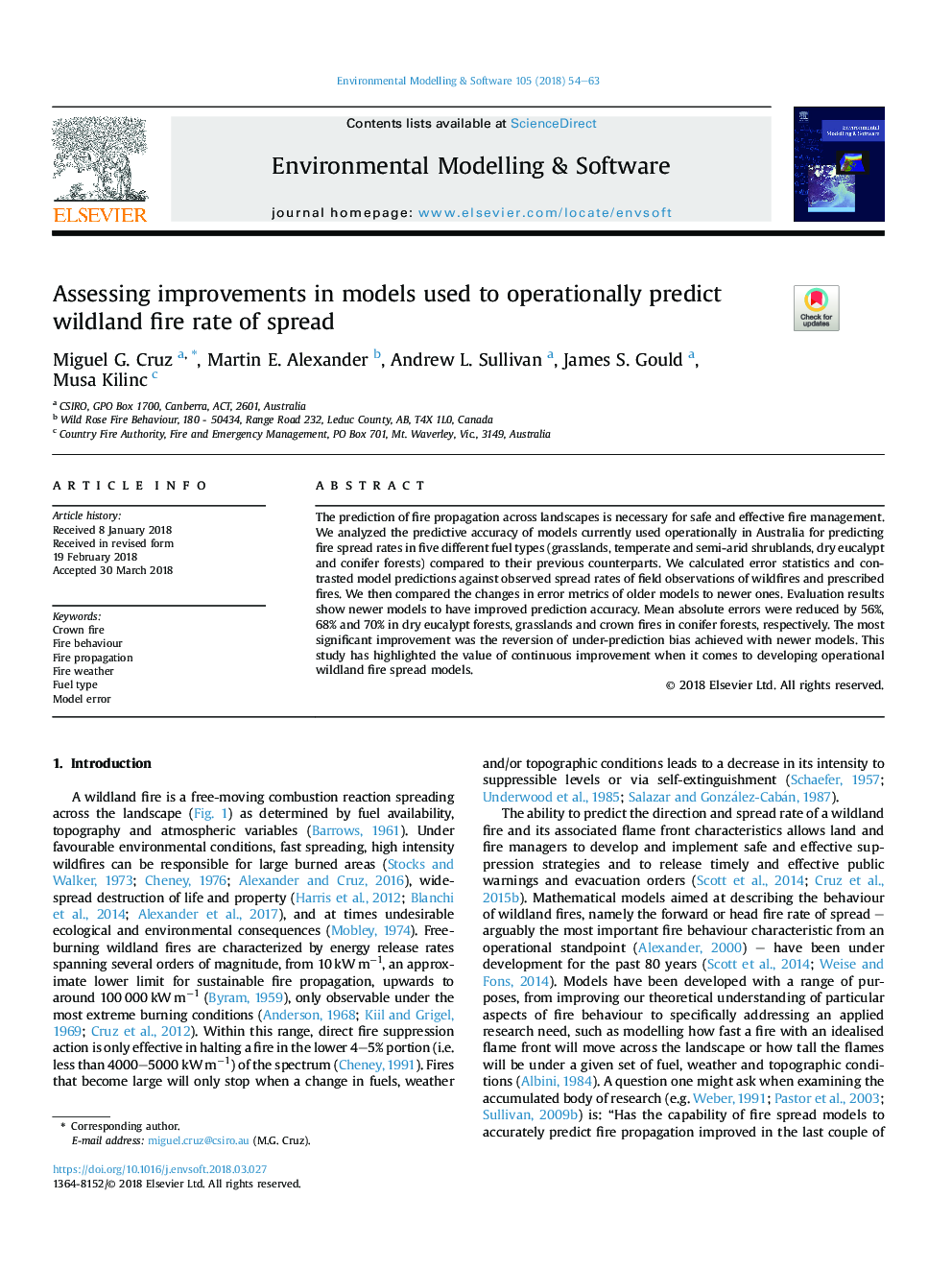| Article ID | Journal | Published Year | Pages | File Type |
|---|---|---|---|---|
| 6962058 | Environmental Modelling & Software | 2018 | 10 Pages |
Abstract
The prediction of fire propagation across landscapes is necessary for safe and effective fire management. We analyzed the predictive accuracy of models currently used operationally in Australia for predicting fire spread rates in five different fuel types (grasslands, temperate and semi-arid shrublands, dry eucalypt and conifer forests) compared to their previous counterparts. We calculated error statistics and contrasted model predictions against observed spread rates of field observations of wildfires and prescribed fires. We then compared the changes in error metrics of older models to newer ones. Evaluation results show newer models to have improved prediction accuracy. Mean absolute errors were reduced by 56%, 68% and 70% in dry eucalypt forests, grasslands and crown fires in conifer forests, respectively. The most significant improvement was the reversion of under-prediction bias achieved with newer models. This study has highlighted the value of continuous improvement when it comes to developing operational wildland fire spread models.
Related Topics
Physical Sciences and Engineering
Computer Science
Software
Authors
Miguel G. Cruz, Martin E. Alexander, Andrew L. Sullivan, James S. Gould, Musa Kilinc,
